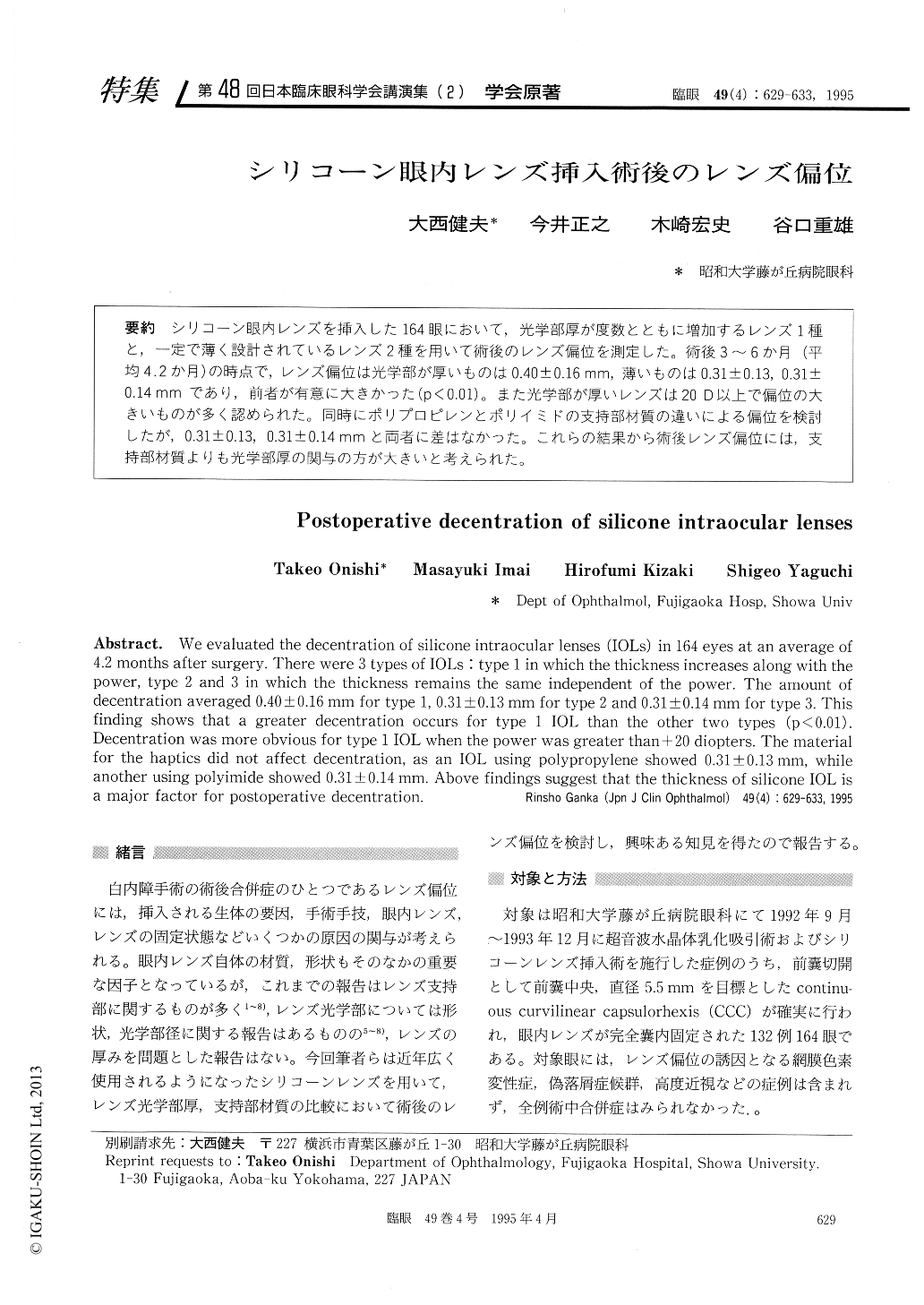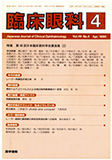Japanese
English
- 有料閲覧
- Abstract 文献概要
- 1ページ目 Look Inside
シリコーン眼内レンズを挿入した164眼において,光学部厚が度数とともに増加するレンズ1種と,一定で薄く設計されているレンズ2種を用いて術後のレンズ偏位を測定した。術後3〜6か月(平均4.2か月)の時点で,レンズ偏位は光学部が厚いものは0.40±0.16mm,薄いものは0.31±0.13,0.31±0.14mmであり,前者が有意に大きかった(p<0.01)。また光学部が厚いレンズは20D以上で偏位の大きいものが多く認められた。同時にポリプロピレンとポリイミドの支持部材質の違いによる偏位を検討したが,0.31±0.13,0.31±0.14mmと両者に差はなかった。これらの結果から術後レンズ偏位には,支持部材質よりも光学部厚の関与の方が大きいと考えられた。
We evaluated the decentration of silicone intraocular lenses (IOLs) in 164 eyes at an average of 4.2 months after surgery. There were 3 types of IOLs: type 1 in which the thickness increases along with the power, type 2 and 3 in which the thickness remains the same independent of the power. The amount of decentration averaged 0.40±0.16mm for type 1, 0.31±0.13mm for type 2 and 0.31±0.14mm for type 3. This finding shows that a greater decentration occurs for type 1 IOL than the other two types (p<0.01). Decentration was more obvious for type 1 IOL when the power was greater than +20 diopters. The material for the haptics did not affect decentration, as an IOL using polypropylene showed 0.31±0.13mm, while another using polyimide showed 0.31±0.14mm. Above findings suggest that the thickness of silicone IOL isa major factor for postoperative decentration.

Copyright © 1995, Igaku-Shoin Ltd. All rights reserved.


